Regulatory T cells reduce acute lung injury fibroproliferation by decreasing fibrocyte recruitment
- PMID: 23002097
- PMCID: PMC3547087
- DOI: 10.1165/rcmb.2012-0198OC
Regulatory T cells reduce acute lung injury fibroproliferation by decreasing fibrocyte recruitment
Abstract
Acute lung injury (ALI) causes significant morbidity and mortality. Fibroproliferation in ALI results in worse outcomes, but the mechanisms governing fibroproliferation remain poorly understood. Regulatory T cells (Tregs) are important in lung injury resolution. Their role in fibroproliferation is unknown. We sought to identify the role of Tregs in ALI fibroproliferation, using a murine model of lung injury. Wild-type (WT) and lymphocyte-deficient Rag-1(-/-) mice received intratracheal LPS. Fibroproliferation was characterized by histology and the measurement of lung collagen. Lung fibrocytes were measured by flow cytometry. To dissect the role of Tregs in fibroproliferation, Rag-1(-/-) mice received CD4(+)CD25(+) (Tregs) or CD4(+)CD25(-) Tcells (non-Tregs) at the time of LPS injury. To define the role of the chemokine (C-X-C motif) ligand 12 (CXCL12)-CXCR4 pathway in ALI fibroproliferation, Rag-1(-/-) mice were treated with the CXCR4 antagonist AMD3100 to block fibrocyte recruitment. WT and Rag-1(-/-) mice demonstrated significant collagen deposition on Day 3 after LPS. WT mice exhibited the clearance of collagen, but Rag-1(-/-) mice developed persistent fibrosis. This fibrosis was mediated by the sustained epithelial expression of CXCL12 (or stromal cell-derived factor 1 [SDF-1]) that led to increased fibrocyte recruitment. The adoptive transfer of Tregs resolved fibroproliferation by decreasing CXCL12 expression and subsequent fibrocyte recruitment. Blockade of the CXCL12-CXCR4 axis with AMD3100 also decreased lung fibrocytes and fibroproliferation. These results indicate a central role for Tregs in the resolution of ALI fibroproliferation by reducing fibrocyte recruitment along the CXCL12-CXCR4 axis. A dissection of the role of Tregs in ALI fibroproliferation may inform the design of new therapeutic tools for patients with ALI.
Figures

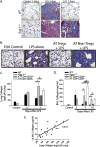
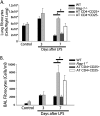
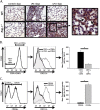
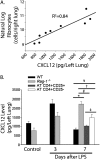
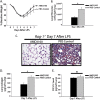
References
-
- Rubenfeld GD, Caldwell E, Peabody E, Weaver J, Martin DP, Neff M, Stern EJ, Hudson LD. Incidence and outcomes of acute lung injury. N Engl J Med 2005;353:1685–1693 - PubMed
-
- The Acute Respiratory Distress Syndrome Network Ventilation with lower tidal volumes as compared with traditional tidal volumes for acute lung injury and the acute respiratory distress syndrome. N Engl J Med 2000;342:1301–1308 - PubMed
-
- Phua J, Badia JR, Adhikari NKJ, Friedrich JO, Fowler RA, Singh JM, Scales DC, Stather DR, Li A, Jones A, et al. Has mortality from acute respiratory distress syndrome decreased over time? A systematic review. Am J Respir Crit Care Med 2009;179:220–227 - PubMed
-
- Ware LB, Matthay MA. The acute respiratory distress syndrome. N Engl J Med 2000;342:1334–1349 - PubMed
-
- Meduri GU, Chinn AJ, Leeper KV, Wunderink RG, Tolley E, Winer-Muram HT, Khare V, Eltorky M. Corticosteroid rescue treatment of progressive fibroproliferation in late ARDS: patterns of response and predictors of outcome. Chest 1994;105:1516–1527 - PubMed
MeSH terms
Substances
Grants and funding
LinkOut - more resources
Full Text Sources
Other Literature Sources
Medical
Molecular Biology Databases
Research Materials

